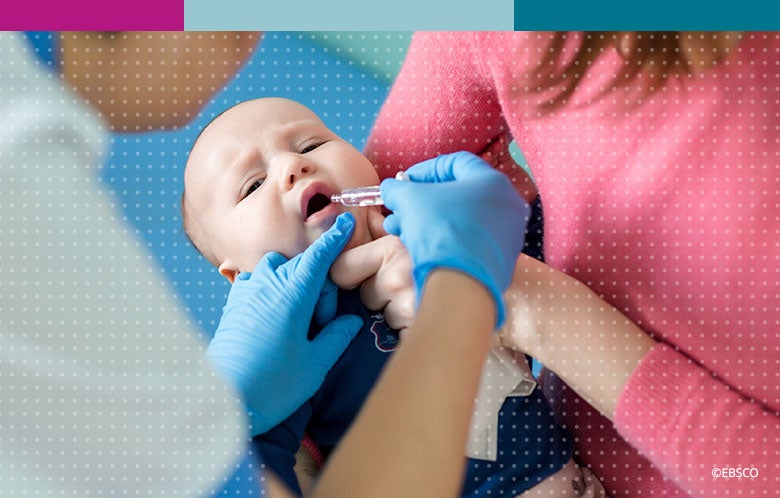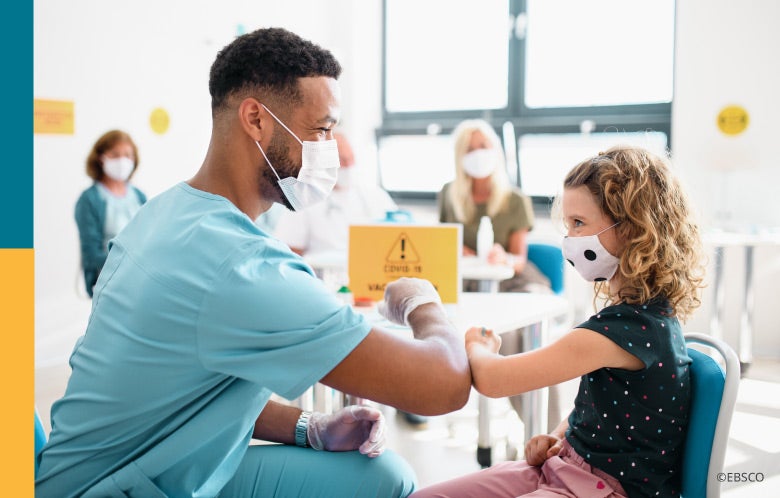In June 2022, a young adult who had not been vaccinated against polio was diagnosed with paralytic polio (also known as poliomyelitis). They presented to an emergency department in Rockland County, New York, with fever, neck stiffness, back and abdominal pain, constipation, and bilateral lower extremity weakness. Sequencing of a stool specimen identified vaccine-derived poliovirus type 2 (VDPV2), a version of the Sabin 2 oral polio vaccine strain which has now been linked to strains isolated in London and Jerusalem.
Polio is a highly contagious viral infection caused by poliovirus. It is spread person-to-person through contact with stool (fecal-oral) and respiratory droplets. Many people infected with poliovirus remain asymptomatic, about one-quarter of patients develop a self-limited flu-like illness, and about one in 200 develop paralytic poliomyelitis. Of those who develop paralysis, about five percent die when the muscles controlling their ability to breath become paralyzed. There is no treatment for polio, but it can be prevented by vaccination.
Poliovirus has been eradicated from most of the world due to mass vaccination efforts of the World Health Organization and Global Polio Eradication Initiative in the latter half of the 20th century. However, polio remains endemic in a few areas of the world with fewer than 200 cases reported annually over the past five years. While still rare, vaccine-derived polio is more common than wild (naturally occurring) poliovirus infection, with 682 cases reported in 2021 compared to six cases of wild polio in the same year.
There are two types of vaccines against polio — inactivated polio vaccine (IPV) and oral polio vaccine (OPV). The inactivated vaccine cannot replicate and cannot cause poliomyelitis, while the oral vaccine is a weakened form of poliovirus that can replicate in some individuals and spread to others. The inactivated vaccine has been used in the United States since 2000, while the oral vaccine is still used throughout the world.
Unvaccinated individuals remain the most susceptible to wild circulating poliovirus and vaccine-derived polio.
Unvaccinated individuals remain the most susceptible to wild circulating poliovirus and vaccine-derived polio.
Vaccine-derived polio is a bit of a misnomer because it does not refer to the development of poliomyelitis in a vaccinated individual. Instead, cases of vaccine-derived polio occur due to mutation of the oral vaccine strain and transmission from a vaccinated person to unvaccinated people. Thus, unvaccinated individuals remain the most susceptible to both wild poliovirus and vaccine-derived polio. Outbreaks of vaccine-derived polio have occurred in areas with low vaccine coverage – two independent outbreaks including more than 150 cases in Democratic Republic of the Congo and Yemen have been reported in 2022.
The case of vaccine-derived polio in New York prompted local health officials to launch an investigation and begin wastewater surveillance. Because the patient had not traveled internationally, the vaccine-derived polio had to have been acquired in the United States. This represents just the second case of locally acquired poliomyelitis in the United States since 1979.
The same vaccine strain of polio was detected in several wastewater samples in Rockland County and surrounding communities indicating local, undetected spread. Public health authorities warned healthcare practitioners to be on alert for cases of limb weakness and initiated new polio vaccination campaigns to boost vaccine coverage.
While no additional cases of poliomyelitis have been identified, persistent detection of vaccine-derived poliovirus in wastewater indicates ongoing spread in the community. Vaccine-derived polio does not pose a risk to vaccinated individuals, however, unvaccinated persons are urged to get their polio vaccines.



